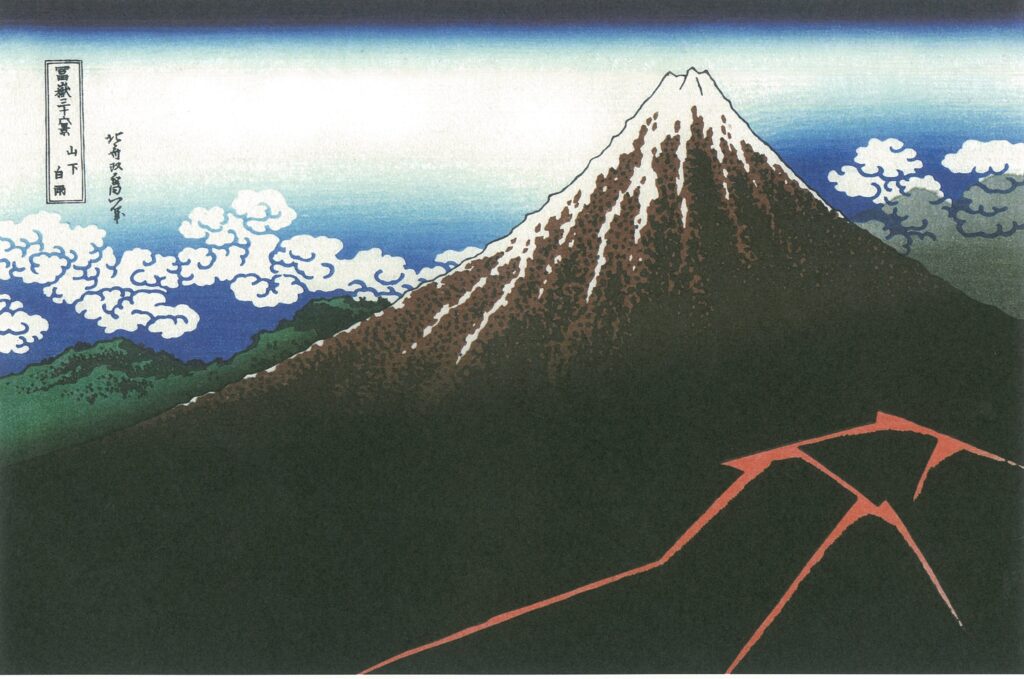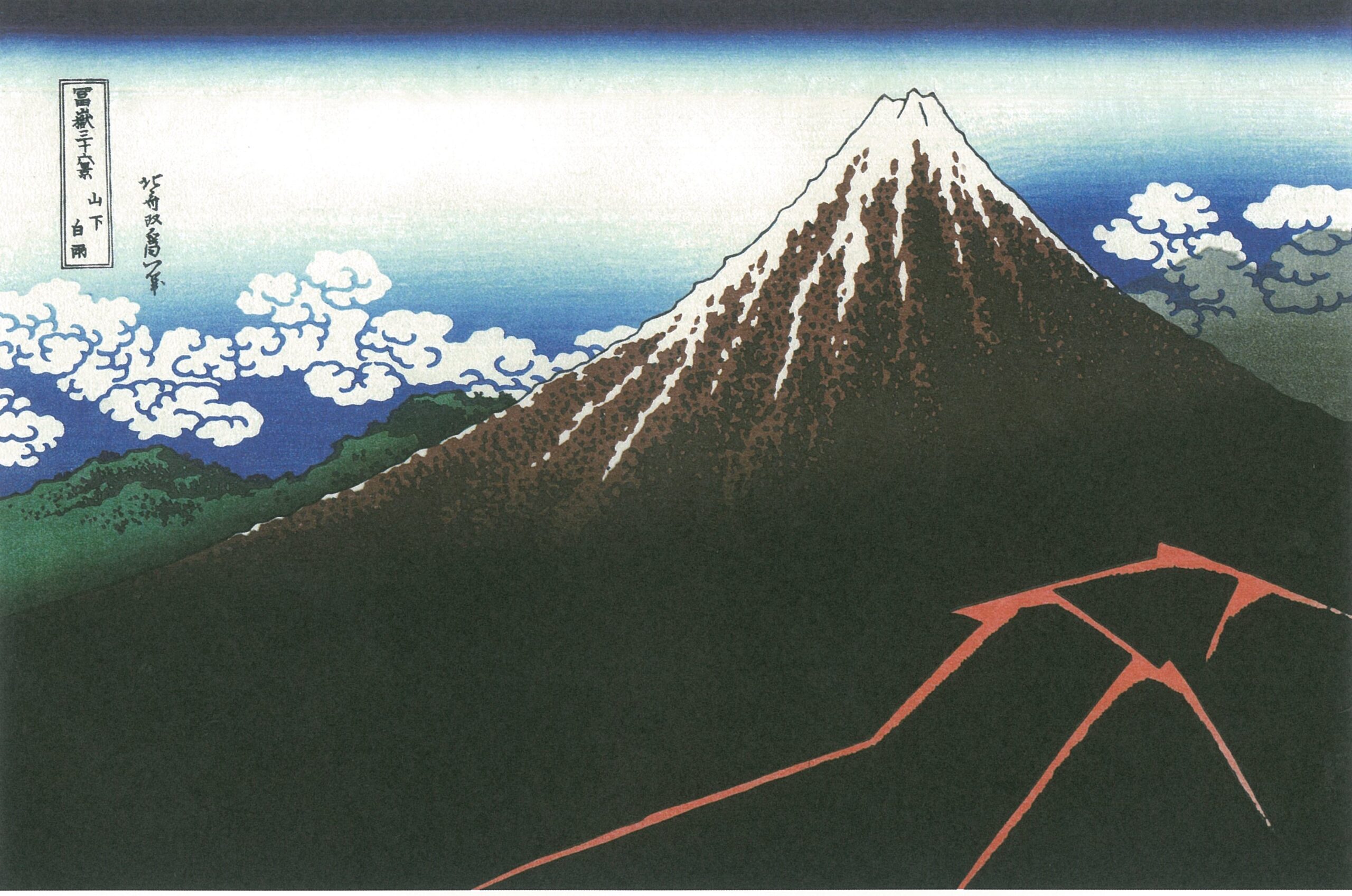Katsushika Hokusai’s Ukiyo-e I will explain Rainstorm Beneath the Summit in Thirty-six Views of Mount Fuji.
Ukiyo-e A work that can be cited as one of the three roles in the Thirty-six Views of Mount Fuji series.
This painting, which represents the majestic appearance of Mt. Fuji, is called “Black Fuji” while “Gaifu, Clear Weather” was called “Red Fuji”.
In contrast to the clear sky at the summit, when you descend to the foot of the mountain, you will be enveloped in pitch-black darkness, and a flash of lightning running intensely will be drawn, giving you an image of heavy rain.
Transcending nature and possessing both stillness and movement, this piece perfectly expresses the magnificence of Mt. Fuji.
As a general interpretation, from the shape of the summit, it has been said that the Yamanashi side is the Misaka massif, between Mitsutoge and Shindotoge, and the Shizuoka side is somewhere in Fujinomiya City.
Despite the fact that the summit has such a big feature, we still haven’t been able to identify a place that perfectly matches the actual landscape.
In the ukiyo-e prints “One Hundred Views of Mt.Fuji” and “Fuji in the Shower”, a scene where the viewpoint moves to the village at the foot of the mountain is depicted. In a time like today when there are no planes,
I am amazed at the ability of Hokusai, an ukiyo-e artist, to imagine Mt. Fuji from various perspectives.
In general, the subject “white rain” means a shower.
However, there is another opinion.
About “white rain”, it reminds me of the image of a shower, evening, and so on.
The original meaning of “white rain”, that is, a shower, rain falling from a bright sky, is not always evening.
If you look at the picture with the understanding that it is a midday shower, you will be convinced.
If the sun is rising or setting, it will cast a shadow on the opposite side of the sun.
Since there are no clear shadows in this painting, it is neither a sunrise nor a sunset.
Interpreted to mean midday showers.
This “Yamashita Shiraume” has many missing parts in the main board and colored board, and few of them leave the image of the first printing of ukiyo-e.
There are also some missing brown dots in the center of the summit, and missing parts at the bottom of the signature brush.
This edition is a valuable one that retains an image close to the first printing. Some of the later printed versions have pine trees added to the base, which is interesting.
This ukiyo-e is from around 1830 to 1832. Hokusai is around 72 years old.



